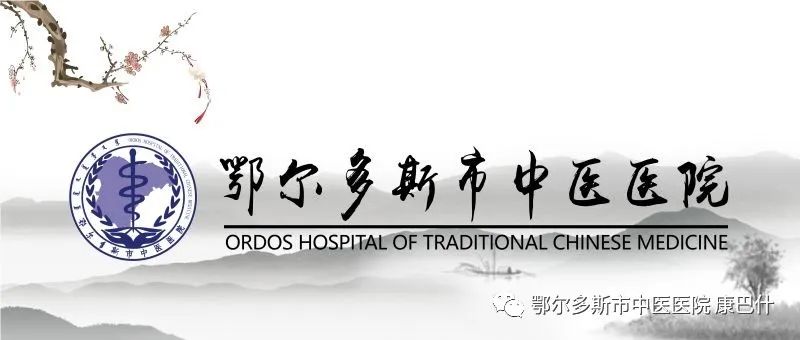
Lian Qiao (Forsythia)
Lian Qiao, also known as Lian Qiao (Lian Ke), Huang Hua Tiao, Huang Lian Tiao Hua, Huang Qi Dan, Qing Qiao, and Luo Qiao, is renowned for its effects in clearing heat and detoxifying, reducing swelling and dispersing nodules, and dispersing wind-heat, earning it the title of “sacred medicine for sores.” The earliest use of Lian Qiao in China has been traced to the genus Forsythia in the family Oleaceae, specifically Forsythia suspensa (also known as Red Early Lotus and Huang Haitang), along with other closely related plants. Before the Tang and Song dynasties, this species was the mainstream variety of Lian Qiao. From the Song dynasty onwards, the Oleaceae variety became the standard. The medicinal parts used earliest were the aerial parts and roots of Lian Qiao. After the Song dynasty, the focus shifted to the fruits of the Oleaceae variety, which continues to be used today.
Chinese Medicine | Lian Qiao
【Source and Characteristics】
This product is the dried fruit of the Oleaceae plant Forsythia. It is harvested in the autumn when the fruit is initially ripe and still green, impurities are removed, steamed, and dried, commonly referred to as “Qing Qiao”; when the fruit is fully ripe, it is harvested, dried, and impurities removed, commonly referred to as “Lao Qiao.”The fruit is elongated oval to oval-shaped, slightly flattened, measuring 1.5 to 2.5 cm in length and 0.5 to 1.3 cm in diameter. The surface has irregular longitudinal wrinkles and numerous small raised spots, with a distinct longitudinal groove on each side. The apex is sharply pointed, and the base has a small fruit stem or has fallen off. Qing Qiao is mostly uncracked, with a green-brown surface and fewer raised grayish-white spots; it is hard in texture; the seeds are mostly yellow-green, slender, with wings on one side. Lao Qiao cracks from the apex or splits into two lobes, with a yellow-brown or red-brown surface, the inner surface mostly light yellow-brown and smooth, with a longitudinal partition; it is brittle; the seeds are brown and mostly fallen off. It has a faint fragrance and a bitter taste.
【Properties and Channels】
Bitter in taste, slightly cold in nature. It enters the Lung, Heart, and Small Intestine meridians.
【Functions and Indications】
Clears heat and detoxifies, reduces swelling and disperses nodules, disperses wind-heat. It is used for abscesses, scrofula, mastitis, erysipelas, wind-heat colds, initial stages of warm diseases, heat entering the nutritive level, high fever with thirst, delirium with rashes, and painful heat dysuria.
【Precautions for Use】
Not suitable for those with spleen and stomach deficiency-cold and qi deficiency with clear pus.Compatible Formulas
Liang Ge San
Composed of Da Huang (Rhubarb), Pu Xiao (Sodium Sulfate), Gan Cao (Licorice), Zhi Zi Ren (Gardenia Fruit), Bo He (Peppermint), Huang Qin (Scutellaria), Lian Qiao (Forsythia), and Zhu Ye (Bamboo Leaf). In this formula, Bo He, Lian Qiao, Zhu Ye, Zhi Zi, and Huang Qin disperse heat from above; Mang Xiao, Da Huang combined with Gan Cao and Bai Mi (White Honey) clear heat from the middle and also serve to soften the bowels. It has the effects of clearing heat and promoting bowel movements, primarily treating heat excess in the upper and middle jiao.
——《Tai Ping Hui Min He Ji Ju Fang》
Wu Xiang Lian Qiao TangComposed of Qing Mu Xiang (Saussurea), Xun Lu Xiang (Agarwood), Mu Ding Xiang (Clove), Chen Xiang (Agarwood), Ma Huang (Ephedra), Huang Qin (Scutellaria), Da Huang (Rhubarb), She Xiang (Musk), Lian Qiao (Forsythia), Hai Zao (Sargassum), She Gan (Belamcanda), Sheng Ma (Cimicifuga), Zhi Shi (Bitter Orange), and Zhu Li (Bamboo Juice). Wu Xiang Lian Qiao Tang is used for pediatric wind-heat swelling and toxicity, with swelling that is white in color, or with necrotic scrofula, bone abscesses, and itchy white rashes.——《Bei Ji Qian Jin Yao Fang》Stories of Chinese Medicine
It is said that in ancient times, a plague known as wind-cold disease was rampant in the Tianhe River basin, with a sudden onset and rapid spread, causing many villagers to lose their lives. A girl named Lian Qiao, whose parents both died in this epidemic, was heartbroken and determined to find a good medicine to treat this plague.
Lian Qiao traveled upstream along the Tianhe River, traversing deep mountains and forests. One day, exhausted and hungry, she suddenly developed a high fever, felt cold and shivered, and fainted by the roadside. At that moment, the celestial being Zhi Nu passed by and, seeing her condition, used the seeds she carried to place in Lian Qiao’s mouth. Before long, Lian Qiao woke up, her fever subsided, and she felt much better. When Zhi Nu learned the reason, she immediately took out seeds from the heavenly garden and scattered them on the ground, instantly causing yellow flowers to bloom all over the mountains, shining brightly. Zhi Nu told Lian Qiao that in the future, if this disease occurred, she should use its fruits for treatment.
After returning to her hometown, Lian Qiao organized the villagers to plant this medicinal material in large quantities at the source of the Tianhe River and used its fruits to treat and prevent diseases for the people, achieving excellent results. To commemorate this kind-hearted girl, people named this medicinal material “Lian Qiao.”
Special Note: The medicines and formulas mentioned in this article are for reference and learning purposes only and cannot replace prescriptions. Traditional Chinese Medicine emphasizes differential diagnosis and treatment, and medication should be tailored to the individual and their condition. Always consult a qualified physician for diagnosis and personalized treatment plans.
—END—
Content Source: “Pharmacopoeia of the People’s Republic of China,” “Chinese Medicine Dictionary,” China Traditional Chinese Medicine News, etc.
Images: Source from the internet
Editor: Yuan Jiapu


